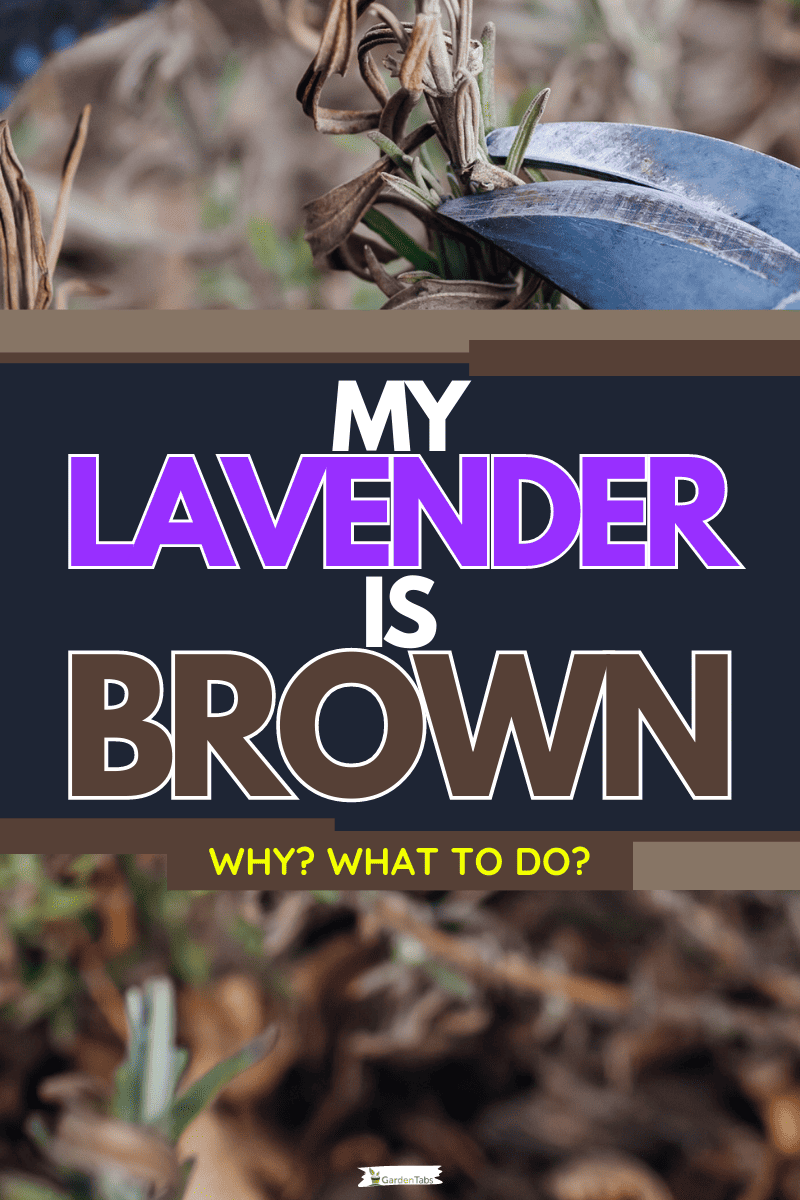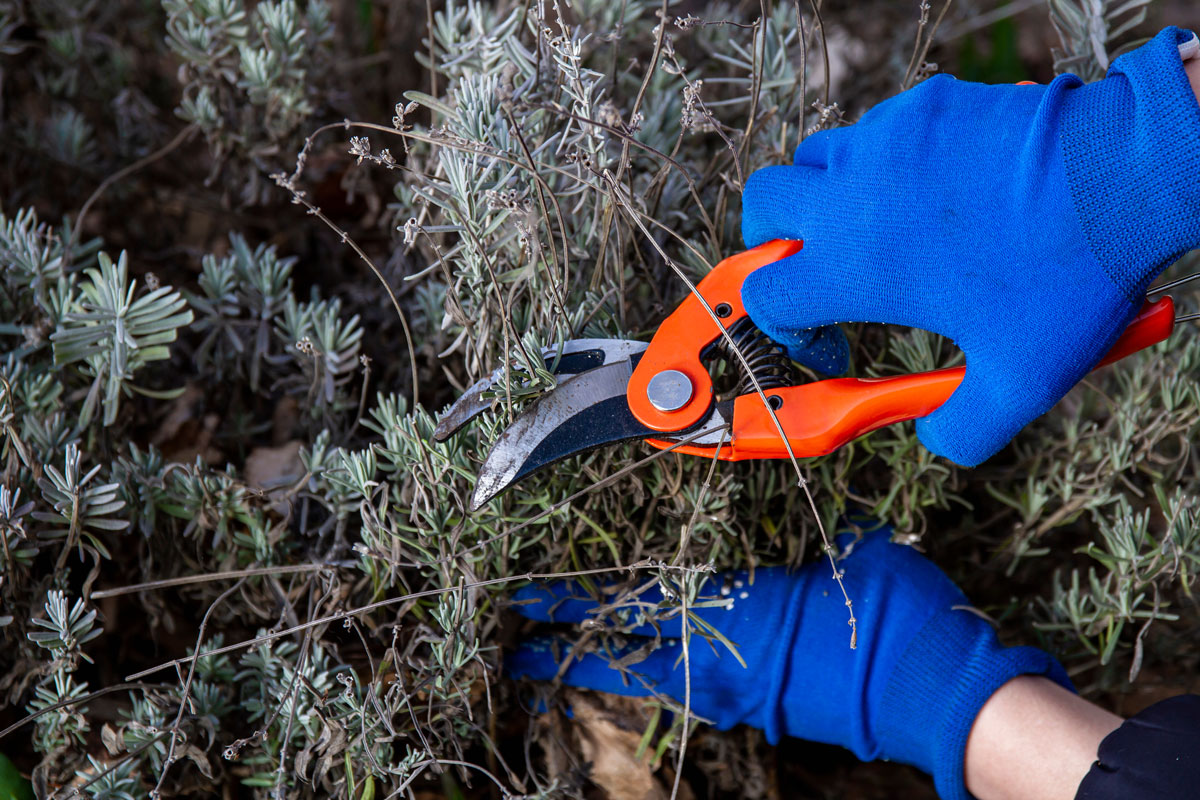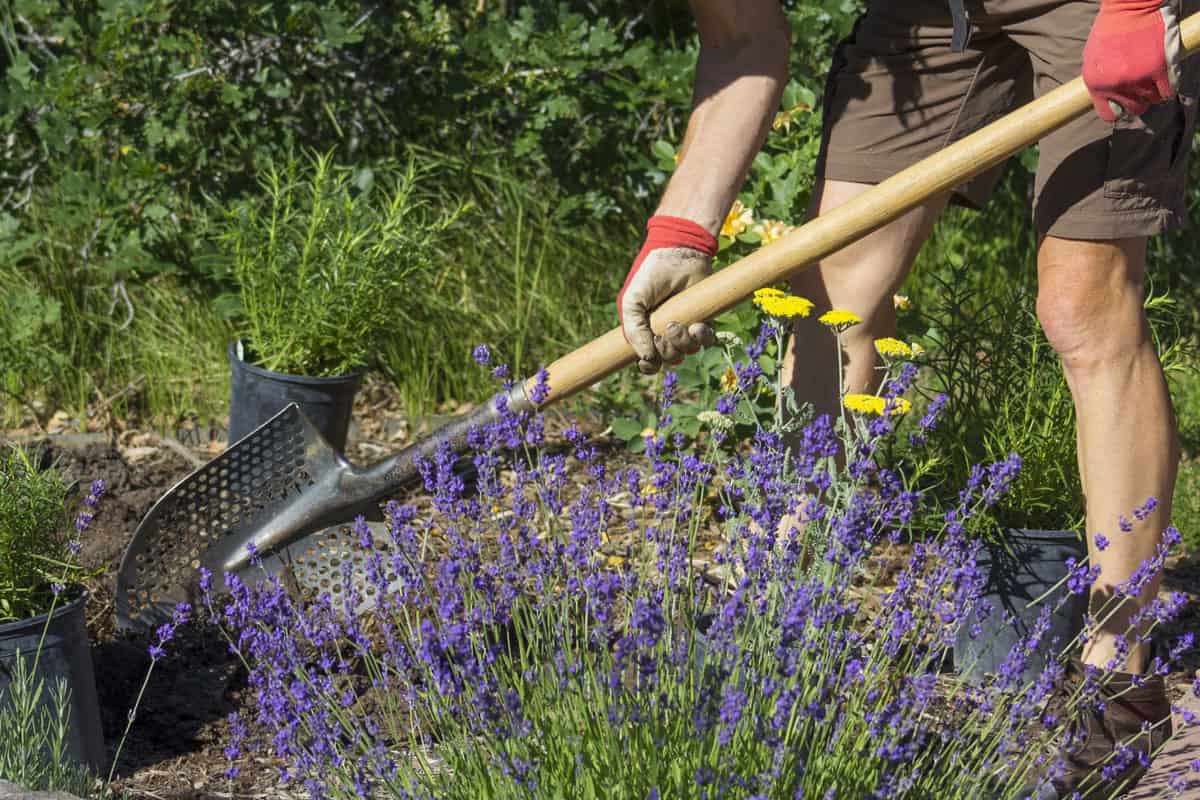Lavenders bring a lovely aroma to the garden; that's why it can be alarming to any gardener when they begin to brown. Why do they do this, and what can you do to fix it? We've done the research and looked to the experts for solutions.
Lavender leaves start to brown starts when the air around them is too dry. Alternatively, it could be because of root rot. Enabling proper drainage and creating a moist surrounding for them tackles this issue.
Keep reading as we elaborate on the causes of brown leaves on lavender and the remedies.

Brown Leaves On Lavender: Why?

Gardeners love lavender as it brings vibrancy, scent, and life anywhere they are planted. Potted or garden-planted lavender needs moisture and lots of love. The main reason why your lavender is browning is that:
Lack Of Nutrients
Your lavender needs nutrients on a timely basis. When it lacks them, it starts to turn brown and crispy. Gardeners might think to simply use soil from their yards, but it might lack enough nutrients for lavender.
Lack Of Water
When your lavender lacks moisture, the leaves become crispy and lose color. It often happens to potted lavender where water is limited.
No Pruning
Lavender needs lots of light, room, and moisture to thrive. Therefore, you must ensure that any lavender bushes growing in your yard or garden are pruned before they bloom. Too many dead branches siphon the sap meant for the flowers, making them brown, and the leaves become crispy.
Too Much Water
When lavender is overwatered and/or the soil drains poorly, it causes the roots to rot and the leaves to turn brown. Overwatering potted plants will also kill the roots because it doesn't allow aeration. Always use a planter or pot with drainage holes at the bottom.
How To Remedy Brown Leaves On Lavender

Lavender is a delicate fern-like plant, and it is sometimes hard for beginner gardeners to figure it out. But once you notice that your fern flower's leaves are curly and starting to change color, attend to it ASAP!
Now that you've identified the issues causing this, you can quickly remedy them.
Adequate Watering
Overwatering and underwatering are never easy to identify until the plant is all but dead. To avoid this, ensure that you plant your lavender in terracotta planters that help retain moisture during hot days.
If you are forgetful and don't remember when you last watered your lavender, start a diary or some other method of tracking to avoid overwatering it. Ensure that you plant lavender in soil that drains properly.
Nutrients
Ensure that you don't have a sick lavender plant. Feed it regularly and check to see if there aren't any parasites clinging to it. Use a thoroughly nutrient-rich soil mix, especially if it's potted.
Care
Large outdoor plants need proper care, and pruning is not exempted from the care list. You should prune large bushes to ensure that dead, diseased, or old don't siphon much-needed sap and nutrients from the healthy branches. The petals and leaves start browning as a sign of a lack of pruning.
Cut Roots
Let the plant sit without water for at least two weeks before uprooting it to aerate the soil. Step further and cut the affected roots before replanting the lavender in a sandy soil mixture. It should help revive your plant in time.
How To Plant And Care For Lavender

Lavender is a herb plant with a strong scent and is relatively easy to grow from scratch. Follow these care tips for warm and cold seasons:
- Water weekly until the plants are firmly established in the ground. If the weather is too hot, you can water the lavender twice a week.
- Once the plants have established a root system in the ground, you should reduce the watering to once every two weeks until they bud.
- Budded lavender should be watered every three weeks to avoid yellowing or a change of color.
- To protect your lavender from cold, you should cover it with mulch.
- Alternatively, replant the lavender plant and place it in a warm section of your home. Use windowsills facing the south side. Remember to water your plant sparingly.
For more information, read this post: How Long Do Lavender Plants Last?
When And How To Prune Lavender?
Pruning any budding plants is compulsory, and lavender is no exception. This is a relatively easy process when done correctly and on time. To have a healthy plant, you should:
- Prune the plant during spring when you can see its growing process.
- Cut only a third of the branch off yearly.
- Terminate dead or diseased branches altogether.
- Snip away carefully during the fall to avoid killing the plant.


Tap here to buy these pruning shears on Amazon.
Here's a short tutorial on pruning lavender.
What Are The Ideal Conditions For Lavender?

Lavender is a drought-resistant plant that needs the best conditions to thrive. Therefore, before you plant, ensure that you have the following:
Proper Soil
Lavender needs soil that drains well and quickly, such as neutral to alkaline soils. Sandy soils are ideal without too much compost in them. If your garden has loamy soil, you could add some of the builder's sand to plant lavender.
Light And Heat

This shrubby plant needs a minimum of six hours of sunlight. The temperatures need to be warm to dry for proper soil drainage, with an average temperature of 75 degrees Fahrenheit. Lower temperatures help it rejuvenate. Enough heat and sun improve the quality of their essential oil.
No Overcrowding
You don't want poor air circulation when planting lavender. Ensure that you have one to three feet of spacing for lavender hedges. Plant a few lavender shrubs and prune them regularly.
Fungal Treatment
Once a lavender plant dies, do not plant a new one in the same spot or soil in a planter. Treat the soil or the section with a fungicide. Use fresh soil mix for the new lavender plant to avoid transferring diseases from the old one.


Click here to see this fungicide on Amazon.
Planting Time
Every climate has slightly different best planting times, which must be considered when planting lavender. In warmer climates, it is best to plant lavender early fall for early root establishment. You can plant lavender in spring and early summer in cooler locales.
Read the following post on planting lavender: Can Lavender Grow In Clay Soil?
Does Lavender Turn Brown When It Has Finished Blooming?
You shouldn't be alarmed if your lavender plant's flowers are browning because it isn't a severe issue, unlike the roots browning.
Lavender flowers turn brown naturally as they die. Once they have bloomed, usually a few weeks, they dry, turn brown, and become seed heads. Lavender flowers turn brown after pollination.
The flowers are fragile and can be harmed by frosts, though the damage isn't permanent, and the plant often recovers quickly. Remove the flower stems to remedy your lavender when the flowers brown, and it will re-bloom.
Other Perennials You Can Grow Near Lavender
To encourage the healthy growth of lavender, you can plant other perennials near it to reduce excess soil moisture in case of overwatering. Yarrow and rosemary grow well with lavender in well-drained soils. Remember, drought-prone, and low-fertility soils are what they all have in common.
Can You Replant Browning Potted Plants To Revive Them?
It is not always possible to successfully revive lavender. When your lavender starts turning brown, it is due to root rot, the plant's core. You could replant it in its soil type, but there is no guarantee. Once you have replanted the lavender, let time takes its course, and your plant might survive.
In Conclusion
Immediately you realize your lavender is turning brown, stop watering it and let it stand and dry out. To speed up the process, remove the plant from the pot or ground and cut the ailing roots. However, planting new lavender in a new bed is better than replanting.
Read this post for more information: Can You Grow Lavender From Dried Buds?
